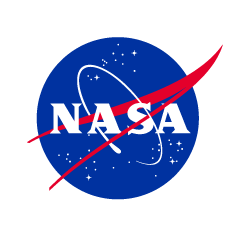Organization
Air Quality Research Division
Email
Business Address
Environment Canada
ON
Toronto
Canada
First Author Publications
-
Fioletov, V.E., et al. (2023), Estimation of anthropogenic and volcanic SO2 emissions from satellite data in the presence of snow/ice on the ground, Atmos. Meas. Tech., 16, 5575-5592, doi:10.5194/amt-16-5575-2023.
-
Fioletov, V.E., et al. (2023), Version 2 of the global catalogue of large anthropogenic and volcanic SO2 sources and emissions derived from satellite measurements, Earth Syst. Sci. Data, 15, 75-93, doi:10.5194/essd-15-75-2023.
-
Fioletov, V.E., et al. (2016), A global catalogue of large SO2 sources and emissions derived from the Ozone Monitoring Instrument, Atmos. Chem. Phys., 16, 11497-11519, doi:10.5194/acp-16-11497-2016.
Note: Only publications that have been uploaded to the ESD Publications database are listed here.
Co-Authored Publications
-
Narayan, K.B., et al. (2023), Environ. Sci. Technol, Environ. Sci. Technol., 57, 11134-11143, doi:10.1021/acs.est.2c07056.
-
Li, C., et al. (2022), A new machine-learning-based analysis for improving satellite-retrieved atmospheric composition data: OMI SO2 as an example, Atmos. Meas. Tech., 15, 5497-5514, doi:10.5194/amt-15-5497-2022.
-
Griffin, D., et al. (2019), High-Resolution Mapping of Nitrogen Dioxide With TROPOMI: First Results and Validation Over the Canadian Oil Sands, Geophys. Res. Lett., 46, doi:10.1029/2018GL081095.
-
Ialongo, I., et al. (2018), Application of satellite-based sulfur dioxide observations to support the cleantech sector: Detecting emission reduction from copper smelters ∗, Environmental Technology & Innovation, 12, 172-179, doi:10.1016/j.eti.2018.08.006.
-
Liu, F., et al. (2018), A new global anthropogenic SO2 emission inventory for the last decade: a mosaic of satellite-derived and bottom-up emissions, Atmos. Chem. Phys., 18, 16571-16586, doi:10.5194/acp-18-16571-2018.
-
Li, C., et al. (2017), India is overtaking China as the world’s largest emitter of anthropogenic sulfur dioxide, Scientific Reports, 7, 14304, doi:10.1038/s41598-017-14639-8.
-
Zhang, Y., et al. (2017), Continuation of long-term global SO2 pollution monitoring from OMI to OMPS, Atmos. Meas. Tech., 10, 1495-1509, doi:10.5194/amt-10-1495-2017.
-
Krotkov, N.A., et al. (2016), Aura OMI observations of regional SO2 and NO2 pollution changes from 2005 to 2015, Atmos. Chem. Phys., 16, 4605-4629, doi:10.5194/acp-16-4605-2016.
-
McLinden, C.A., et al. (2016), Space-based detection of missing sulfur dioxide sources of global air pollution, Nature Geoscience, 9, 496, doi:10.1038/NGEO2724.
-
McLinden, C.A., et al. (2016), A Decade of Change in NO2 and SO2 over the Canadian Oil Sands As Seen from Space, Environ. Sci. Technol., 50, 331-337, doi:10.1021/acs.est.5b04985.
Note: Only publications that have been uploaded to the ESD Publications database are listed here.
